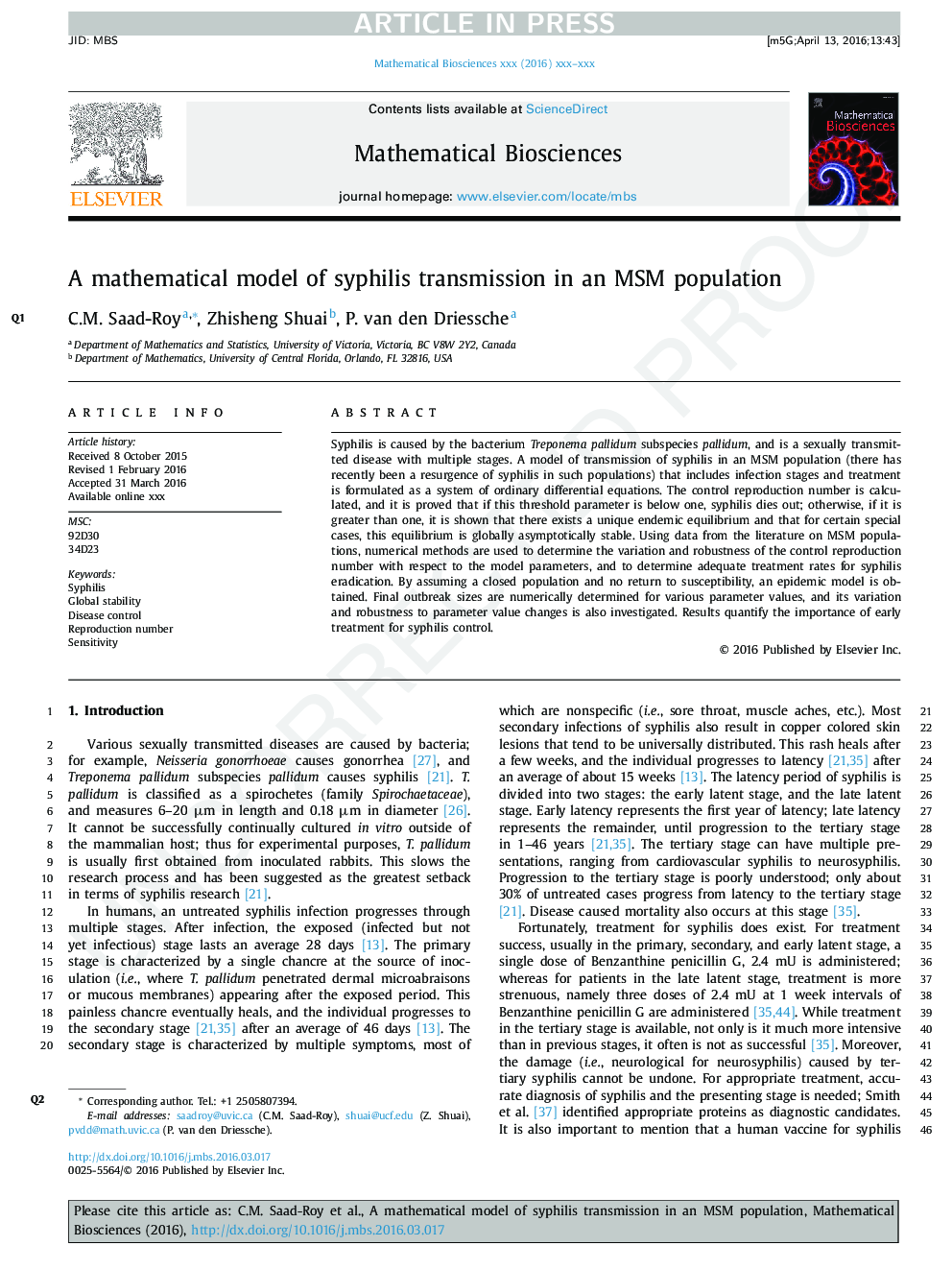| Article ID | Journal | Published Year | Pages | File Type |
|---|---|---|---|---|
| 6371834 | Mathematical Biosciences | 2016 | 12 Pages |
Abstract
Syphilis is caused by the bacterium Treponema pallidum subspecies pallidum, and is a sexually transmitted disease with multiple stages. A model of transmission of syphilis in an MSM population (there has recently been a resurgence of syphilis in such populations) that includes infection stages and treatment is formulated as a system of ordinary differential equations. The control reproduction number is calculated, and it is proved that if this threshold parameter is below one, syphilis dies out; otherwise, if it is greater than one, it is shown that there exists a unique endemic equilibrium and that for certain special cases, this equilibrium is globally asymptotically stable. Using data from the literature on MSM populations, numerical methods are used to determine the variation and robustness of the control reproduction number with respect to the model parameters, and to determine adequate treatment rates for syphilis eradication. By assuming a closed population and no return to susceptibility, an epidemic model is obtained. Final outbreak sizes are numerically determined for various parameter values, and its variation and robustness to parameter value changes is also investigated. Results quantify the importance of early treatment for syphilis control.
Related Topics
Life Sciences
Agricultural and Biological Sciences
Agricultural and Biological Sciences (General)
Authors
C.M. Saad-Roy, Zhisheng Shuai, P. van den Driessche,
